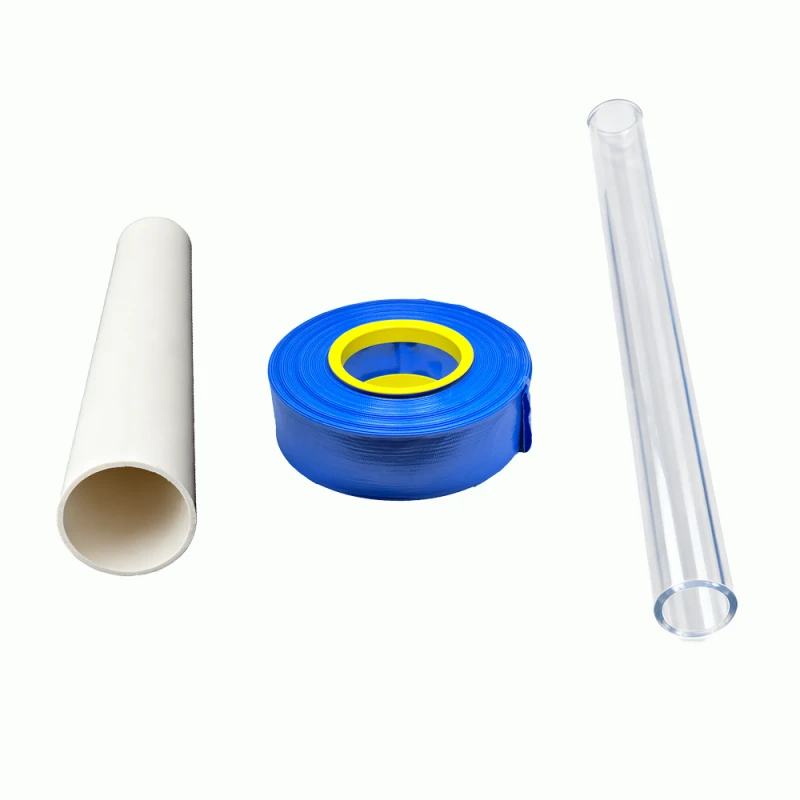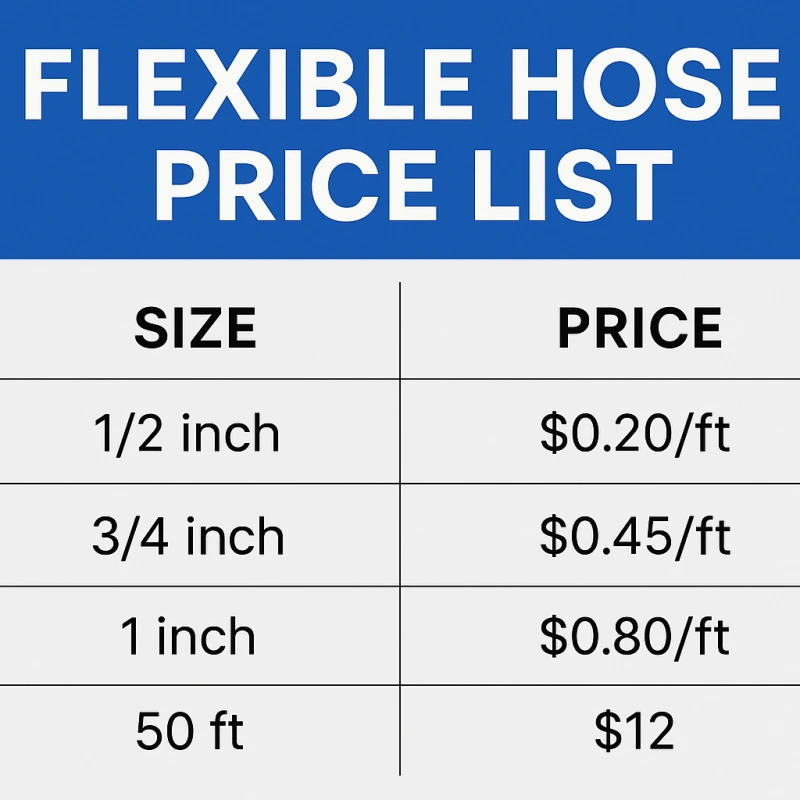How to Choose the Right Lay Flat Hose for Oil and Gas Operations
Selecting the right lay flat hose is critical for oil & gas success. This guide covers material types, pressure ratings, flow capacity, and long-term cost efficiency. Learn how QINGDAO RENATO PLASTIC CO., LTD delivers durable, high-performance hose solutions tailored for demanding field conditions. Maximize safety, uptime, and ROI with expert guidance.

The oil and gas industry doesn’t forgive mistakes—especially when it comes to the integrity of fluid transfer systems. Whether you're dealing with fracking water, drilling mud, or even chemical-laden byproducts, selecting the right lay flat hose isn't just a minor procurement decision; it's a pivotal operational necessity. The wrong choice can result in costly downtime, safety hazards, and regulatory headaches.
This article guides you through how to choose the best lay flat hose for your oil and gas operations, drawing on real-world data and industry insights. And if you're looking for a trustworthy supplier, we’ll show you why QINGDAO RENATO PLASTIC CO., LTD might be the best partner in the business.
Understanding Lay Flat Hose Applications in Oil & Gas
Lay flat hoses are essential for temporary fluid transfer in oilfields—be it fresh water for fracking, fuel for machinery, or chemically reactive slurries. These hoses must endure extreme conditions: high pressures, corrosive chemicals, rugged terrains, and temperature swings from arctic cold to desert heat.
To understand which hose suits your operation, it’s critical to match specifications with use cases. Below is a comparative table of the most common lay flat hose types:
Table 1: Comparative Analysis of Common Lay Flat Hoses
| Hose Type | Max Pressure (Bar) | Temperature Resistance (°C) | Weight (kg/m) | Flexibility |
|---|---|---|---|---|
| Standard PVC Layflat | 4 | -10 to 60 | 0.25 | Medium |
| Rubber Reinforced Layflat | 10 | -20 to 80 | 0.65 | High |
| Polyurethane Layflat | 16 | -40 to 90 | 0.45 | High |
| TPU Layflat | 20 | -50 to 100 | 0.50 | Very High |
If you're hauling water across muddy terrain or transporting caustic liquids to a remote site, each variable in this table matters profoundly. Still, the equation isn't always simple. Flexibility, for instance, is often overlooked until your hose refuses to unroll in sub-zero conditions.
Matching Hose Specifications to Operational Needs
Every sub-sector in oil & gas brings unique demands. For instance, fracking operations require high-pressure, abrasion-resistant hoses, while chemical plants need hoses with excellent chemical compatibility and high-temperature tolerance.
Let’s look at a real-world reference for hose selection based on specific application scenarios:
Table 2: Recommended Hoses for Different Oil & Gas Applications
| Industry Use Case | Required Pressure (Bar) | Recommended Hose Type | Durability (Years) |
|---|---|---|---|
| Drilling Mud Transfer | 8 | Rubber Reinforced | 3 |
| Fracking Water Transport | 12 | TPU Layflat | 5 |
| Fuel Delivery | 15 | Polyurethane Layflat | 4 |
| Chemical Handling | 18 | TPU Layflat | 6 |
As seen here, TPU (thermoplastic polyurethane) hoses are emerging as the go-to option for demanding applications due to their outstanding pressure resistance and chemical stability. But TPU hoses are not cheap. The challenge is determining whether their long lifespan and performance benefits outweigh initial costs. In many cases—they absolutely do.
Other Factors to Consider Beyond Material
1. Hose Diameter and Flow Rate
While pressure rating is paramount, hose diameter affects throughput. A 4" TPU lay flat hose will naturally offer better volume transfer than a 2" PVC hose—but it comes at the cost of added weight and handling complexity. Always calculate flow rates required for peak operation to avoid undersizing.
2. Hose Assembly & Accessories
A hose is only as strong as its weakest fitting. Inferior couplings or clamps can lead to catastrophic leaks or bursts. This is why QINGDAO RENATO PLASTIC CO., LTD offers fully assembled solutions with Camlock, Storz, and Nozzle fittings. When your operation is in the middle of nowhere, a pre-assembled and pressure-tested hose system is a lifesaver.
3. Portability and Storage
Lay flat hoses are preferred precisely because they collapse flat. But not all lay flat hoses are equal in this regard. TPU hoses roll tighter and store more easily than traditional PVC, especially in cold weather. That could mean the difference between one truckload or two—no small consideration in remote field logistics.
The Cost-Benefit Equation in Hose Selection
This is where things get nuanced. A hose that’s cheaper up front might require more frequent replacement, suffer more from UV degradation, or be more prone to kinking and cracking. Here’s a simplified cost-benefit breakdown over five years of operation:
| Hose Type | Avg. Cost per Meter | Replacement Cycle (Years) | 5-Year Cost (per 100m) |
|---|---|---|---|
| PVC Layflat | $1.50 | 1.5 | ~$500 |
| Rubber Reinforced | $3.20 | 3 | ~$350 |
| Polyurethane Layflat | $5.00 | 4 | ~$250 |
| TPU Layflat | $6.80 | 5 | ~$204 |
Despite higher upfront costs, premium hoses like TPU have a much lower long-term cost, especially when you factor in reduced downtime and maintenance.
Why Work with QINGDAO RENATO PLASTIC CO., LTD?
At this point, you may wonder where to source hoses that meet such stringent standards. This is where QINGDAO RENATO PLASTIC CO., LTD truly excels. With over 15 years of hose manufacturing experience, 60 production lines, and service in over 60 countries, we know what durability means in the oilfield.
Our offerings include:
PVC Layflat Hoses in standard and heavy-duty variants
Rubber Reinforced & High-Pressure Hoses
TPU & Polyurethane Lay Flat Options for extreme environments
Hose Assemblies with precision-engineered Camlock, Storz, and Clamp fittings
Custom solutions tailored to oil & gas demands
Whether you're operating in the frostbitten fields of Alberta or the sun-scorched deserts of the Middle East, our hoses stand up to the test.
And more than that—we stand behind them. Our team of 120+ employees, including dedicated QC and technical teams, ensures that what you receive is battle-tested and field-proven. We're not just manufacturers. We're problem-solvers. Contact Renato today!
Questions You Should Ask Before Purchasing a Lay Flat Hose
Here’s a checklist to guide your next hose procurement:
What’s the maximum pressure and temperature expected in operation?
Is chemical resistance needed?
What is the required flow rate?
Is the hose going to be buried, dragged, or exposed to UV rays?
Do I need pre-assembled fittings?
How often can I afford downtime?
Choosing the right lay flat hose is not about picking the most expensive one. It’s about balancing performance, safety, and cost over the life of your project. And if you don’t know all the answers, that’s okay—QINGDAO RENATO PLASTIC CO., LTD is here to help.
Final Thoughts: Don’t Just Buy a Hose—Invest in Reliability
In a world where oil and gas margins are tight and every minute of uptime counts, equipment that "just works" is priceless. A high-quality lay flat hose isn't a luxury—it’s a cornerstone of operational stability. The right hose does more than carry fluid. It carries confidence, continuity, and peace of mind.
And when you choose a seasoned manufacturer like QINGDAO RENATO PLASTIC CO., LTD, you're not just buying a product. You're building a partnership.

